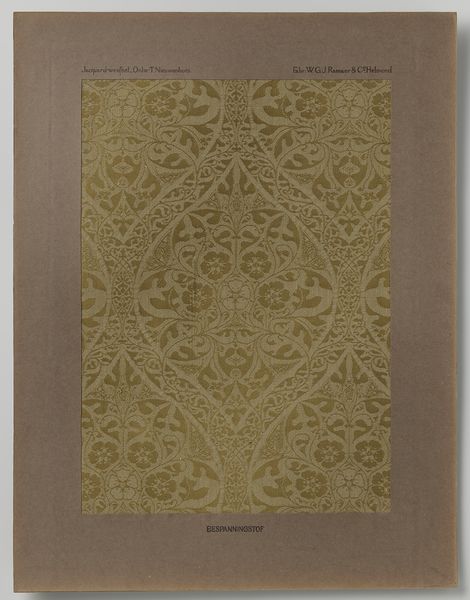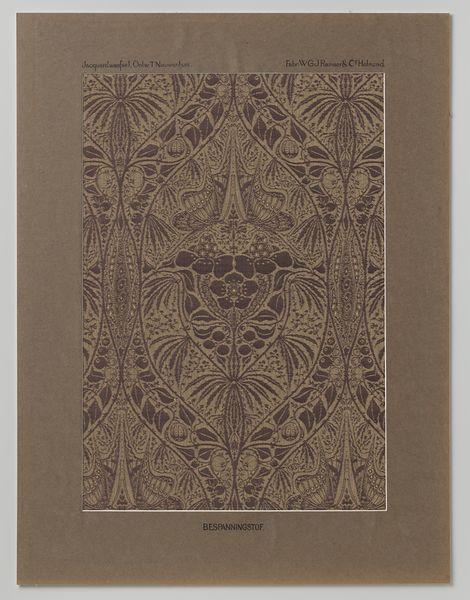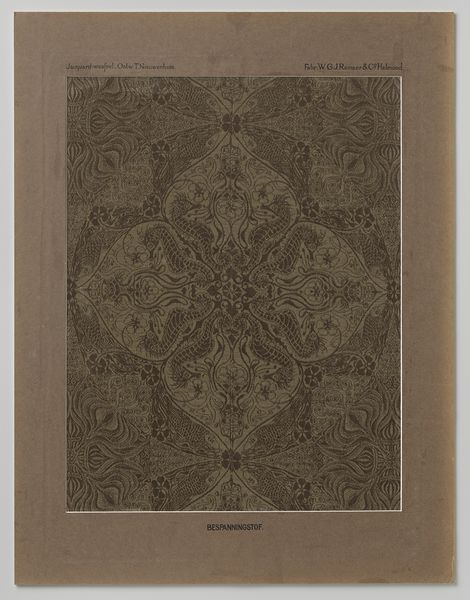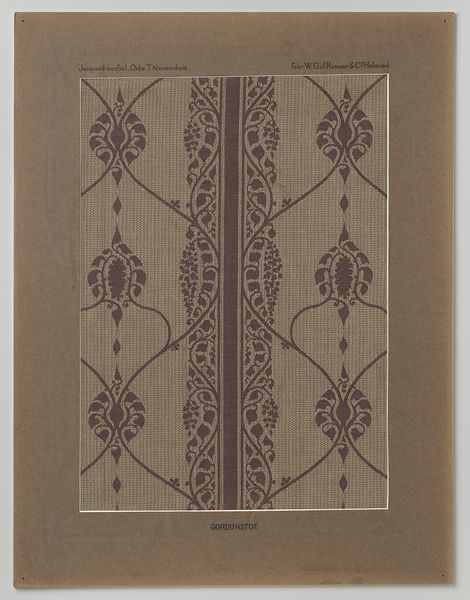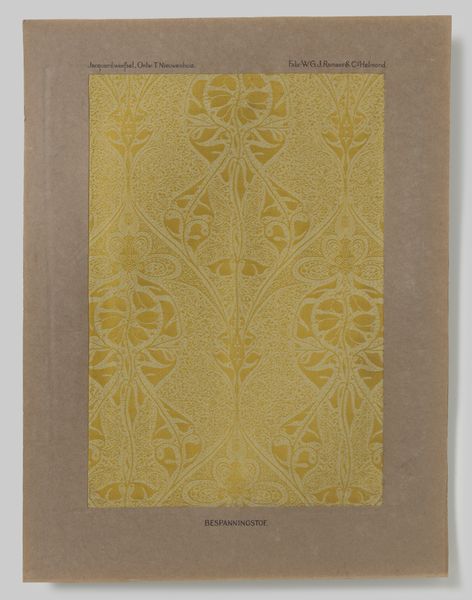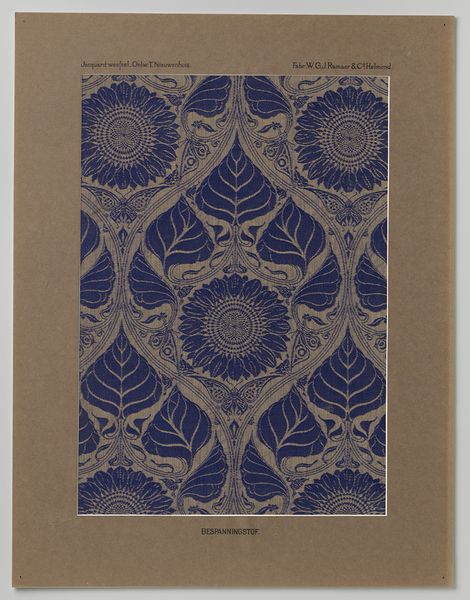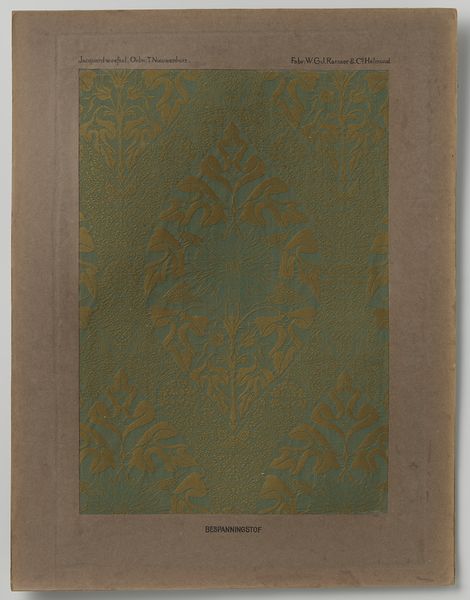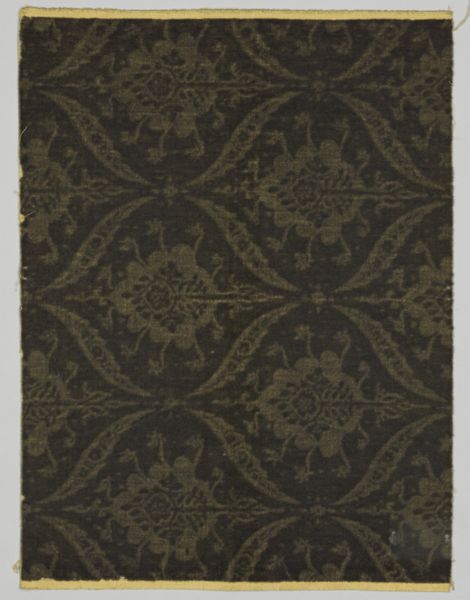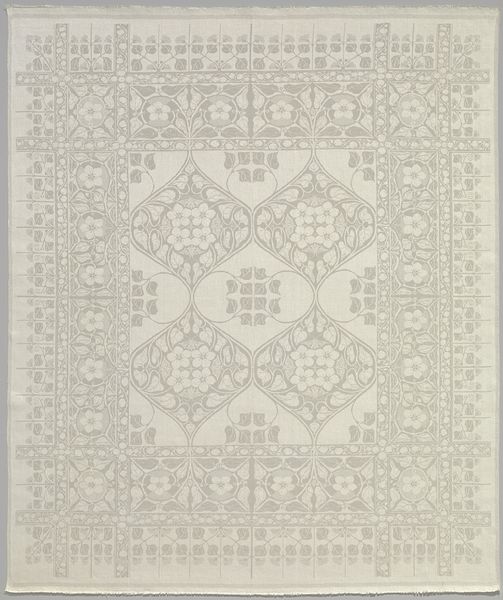
Staal bespanningsstof naar ontwerp van Theo Nieuwenhuis in passe-partout c. 1910
textile
art-nouveau
textile
geometric
decorative-art
Dimensions: height 64.0 cm, width 49.0 cm
Copyright: Rijks Museum: Open Domain
Curator: The 'Staal bespanningsstof naar ontwerp van Theo Nieuwenhuis in passe-partout,' dating from around 1910 and held here at the Rijksmuseum, presents a striking example of textile design. What's your immediate take? Editor: It strikes me as both ornate and calming, paradoxically. The colour palette is limited, creating a muted harmony. But then the pattern is intricate, almost dizzying with its layered symmetries. Curator: Indeed. Theo Nieuwenhuis designed this textile, and you see how strongly the Art Nouveau style influences the intricate, flowing patterns. It's more than just aesthetics; it reflects the societal shift of the era. Editor: You're right. Art Nouveau became popular right around when industrial production grew bigger, because it emphasized how artistic design, including for more everyday objects, like this fabric, could boost social standing, if businesses sold this to richer customers. Curator: Exactly, it brings up questions about production and labour practices, doesn't it? It might appear ‘high art’ because of its stylishness. But really it brings up the idea of accessibility in design, considering who would purchase it and use it. Editor: Also, it is important that art that becomes viewed as "high" or "fine" art gets defined that way. You almost have to be an insider to get into some galleries or understand contemporary sculpture, but this art sits alongside a useful fabric piece which is inherently about use. Curator: Precisely! And that inherent 'use' ties directly to how such patterns played into early 20th-century visual culture. Consider also how spaces presented art like this pattern on cloth. The use and the public availability played huge parts in shaping the popular views about beauty back then. Editor: It’s interesting to note how its placement in this building changes things. It makes us revisit our ideas regarding decorative arts or industrial techniques through its physical display right here. Curator: Seeing its cultural impact considered with a critical view, in the very structure which dictates ‘value’, does indeed encourage us reconsider the narratives. Editor: Definitely something to ponder as we view and assess what gets designated worthy!
Comments
No comments
Be the first to comment and join the conversation on the ultimate creative platform.
